


JOHANNES KEPLER 1571 -
Acknowledgements
Kepler: by the German painter Hans von Aachen (1552-
Including:
Willebrord Snell

xxxxxThe German mathematician and astronomer Johannes Kepler, a firm supporter of the sun-
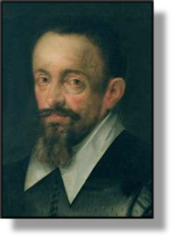 xxxxxThe German mathematician and astronomer Johannes Kepler was one of the first firm supporters of the sun-
xxxxxThe German mathematician and astronomer Johannes Kepler was one of the first firm supporters of the sun-
xxxxxKepler was born in the town of Weil der Stadt in Wurttemberg. His family was poor, but he gained a local scholarship and studied theology and the classics at Tubingen University. His original intention was to be a minister in the Lutheran Church, but such was his interest in astronomy that in 1594 he became a lecturer in this subject at the University of Graz. It was while employed here that he wrote his Cosmographic Mystery in support of the Copernican theory. Published in 1596, this treatise greatly impressed Brahe, and in 1600 he invited Kepler to be one of his assistants at his observatory at Benatek near Prague. When Brahe died the following year, Kepler succeeded him as mathematician and court astronomer to the Holy Roman Emperor Rudolph II, and thus came into possession of the 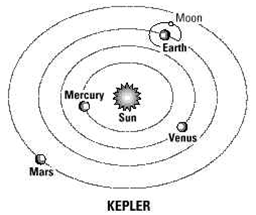 Danish astronomer's huge collection of astronomical observations.
Danish astronomer's huge collection of astronomical observations.
xxxxxIn 1616 he was appointed mathematician to the states of Upper Austria, and it was while living in Linz that he published his Harmonics of the World. One of his last major works, written over three years, was his Introduction to Copernican Astronomy, completed in 1621. Banned by the Roman Catholic Church, this included all his major discoveries and played a major part in winning over support for the Copernican theory.
xxxxxIn the field of mathematics he developed a system of infinitesimals which proved the forerunner of calculus, and his work entitled Optics, written in 1604, described in accurate detail the workings of the human eye. At one time he also wrote a book on astrology entitled The More Reliable Bases of Astrology, and this proved very popular. In his last years he worked on what can only be described as a work of science fiction. His Somnium (Dream), published after his death in 1634, describes a journey to the moon, and muses over the existence of lunar inhabitants. During his lifetime he published no less than 33 works, together with 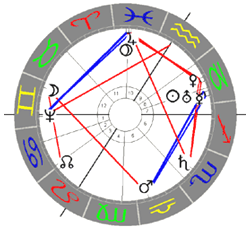 much correspondence and some 20 volumes of hand-
much correspondence and some 20 volumes of hand-
xxxxxFor the record, Kepler's three laws of planetary motion are as follows: (1) the planets travel around the Sun in elliptical orbits, one focus of the ellipse being occupied by the Sun; (2) the line joining the Sun and a planet sweeps out equal areas in equal times. In other words, the nearer a planet is to the sun, the faster it travels; (3) the squares of the periods of the planets are proportional to the cubes of their mean distances from the Sun. That means that planets nearer the sun have a shorter year than those further away from it.
xxxxxIncidentally, in 1620, when Kepler was working for the Emperor, his mother was accused of being a witch. Concerned for his mother's fate -
J1-
xxxxxSnell’s law also belongs to this period. Devised in 1621 by the Dutch mathematician and physicist Willebrord Snell (1580-
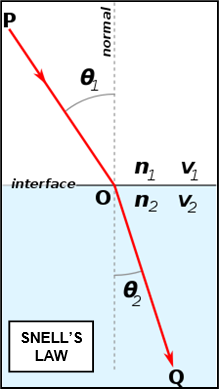
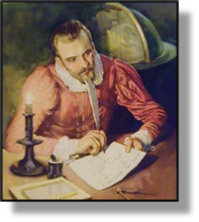 xxxxxAnother scientific law of this time was that of the Dutch mathematician and physicist Willebrord Snell (1580-
xxxxxAnother scientific law of this time was that of the Dutch mathematician and physicist Willebrord Snell (1580-
xxxxxSnell, professor of mathematics at Leiden University, also discovered a way of determining distances by triangulation. Using a large quadrant to take readings of particular landmarks around his home -


